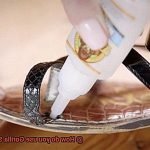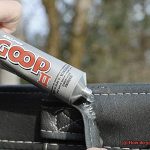Imagine this: you’re holding together the pieces of a shattered heirloom, fastening a floating shelf with finesse, or securing your favorite necklace for another day of dazzling. And what’s your secret weapon in these sticky situations? Adhesive. Whether it’s tape, glue, or those trusty sticky strips, this unassuming hero has been keeping things intact since time immemorial.
But have you ever pondered the true staying power of adhesive bonds? Are they just a temporary quick fix or can they withstand the relentless test of time? In this blog post, we embark on a captivating journey into the realm of adhesives, unraveling their lifespan, exploring the factors that influence their durability, and sharing invaluable tips to ensure your bonds remain unyieldingly strong.
So buckle up and prepare to witness the unveiling of secrets behind these sticky marvels. From fleeting fixes to unbreakable unions that stand tall against the odds, we’ll equip you with all the knowledge you need to make smarter choices when it comes to mending anything in your home, office space, or even unleashing your creativity in craft projects.
Get ready to peel back the layers and stick around as we dive deep into the extraordinary science behind adhesive bonding.
Factors Affecting the Lifespan of an Adhesive Bond
Contents
- 1 Factors Affecting the Lifespan of an Adhesive Bond
- 2 Types of Adhesives and Their Bonding Capabilities
- 3 How Materials Impact the Longevity of an Adhesive Bond
- 4 Environmental Conditions and Their Effect on an Adhesive Bond
- 5 Load Placed on a Bonded Surface and Its Impact on Longevity
- 6 Claims About Lifespan and Actual Durability of a Bond
- 6.1 Claim #1: “Adhesive bonds are permanent and will last a lifetime.”
- 6.2 Claim #2: “Certain adhesives are resistant to environmental factors.”
- 6.3 Claim #3: “Adhesives have high tensile strength and resistance to shear forces.”
- 6.4 Claim #4: “Proper surface preparation and application techniques enhance bond durability.”
- 7 Choosing the Right Adhesive for Your Application
- 8 Tips for Ensuring a Long-Lasting Adhesive Bond
- 9 Conclusion
The lifespan of an adhesive bond can vary greatly depending on several factors. In this article, we will delve into the intricacies of adhesive types, substrate compatibility, surface preparation, environmental conditions, and mechanical stress to uncover the secrets behind achieving durable and reliable bonds.
Adhesive Type:
The type of adhesive used plays a pivotal role in determining the lifespan of an adhesive bond. Each adhesive possesses unique properties designed for specific applications.
Some adhesives are formulated to provide long-lasting and robust bonds, while others are better suited for temporary or short-term bonding. Selecting the appropriate adhesive ensures optimal bond strength and longevity.
Substrate Compatibility:
The compatibility between the adhesive and the substrate is crucial for a bond’s lifespan. Adhesives are tailored to adhere to specific materials, with effectiveness varying depending on the substrate’s surface characteristics.
A thorough understanding of the interaction between the adhesive and substrate is essential for achieving a strong and enduring bond.
Surface Preparation:
Proper surface preparation is a vital step in creating a durable adhesive bond. Surfaces must be meticulously cleaned, dried, and free from contaminants such as dust, oil, grease, or rust. In some cases, additional treatments like sanding or priming may be necessary to enhance adhesion. Adequate surface preparation ensures maximum contact between the adhesive and substrate, resulting in a stronger bond with improved longevity.
Environmental Conditions:
Environmental conditions exert a significant impact on adhesive bond lifespan. Factors such as temperature, humidity, sunlight exposure, and chemical exposure can influence the performance of adhesives. Extreme temperatures may cause adhesives to become brittle or soft, compromising their strength. High humidity levels can lead to moisture absorption, weakening the bond over time. Proper consideration of environmental conditions is crucial when selecting an adhesive suitable for the specific application.
Mechanical Stress:
Mechanical stress is a critical factor affecting the lifespan of an adhesive bond. Constant or excessive forces like tension, compression, or shear stress can lead to premature bond failure.
Assessing the expected mechanical loads on the bonded assembly and selecting an adhesive with appropriate strength and flexibility is paramount. Incorporating proper design considerations, such as joint geometry and reinforcement, helps distribute mechanical stress evenly, resulting in a longer-lasting bond.

Types of Adhesives and Their Bonding Capabilities
Adhesives come in various types, each with its own unique composition and bonding capabilities. Understanding the different types of adhesives can help you choose the right one for your specific application and ensure a long-lasting bond. Here are five common types of adhesives:
Solvent-Based Adhesives:
Solvent-based adhesives contain solvents that dissolve the adhesive and create a strong bond. These adhesives have fast drying times and high strength, making them ideal for applications such as woodworking, laminating, and automotive assembly. They provide reliable bonds on a wide range of materials.
Water-Based Adhesives:
Water-based adhesives are eco-friendly and have low odor levels, making them popular for indoor applications. While they may not offer the same level of strength as solvent-based adhesives, they still provide reliable bonds for crafts, paper bonding, and packaging industries.
Hot Melt Adhesives:
Hot melt adhesives are solid at room temperature but melt when heated. They are commonly used in packaging and labeling, woodworking, and product assembly. These adhesives offer quick bonding times and can create strong bonds on various materials.
Specialty Adhesives:
Specialty adhesives are designed for specific applications. Epoxy adhesives are known for their exceptional strength and durability, making them common in construction, aerospace, and marine industries. Silicone adhesives are flexible and resistant to moisture and extreme temperatures, making them suitable for sealing applications and electronics manufacturing.
Pressure-Sensitive Adhesives:
Pressure-sensitive adhesives are commonly found in tapes and labels. They form a bond when pressure is applied and can be easily removed without leaving residue. While they may not last as long as other types of adhesives, they are suitable for temporary or non-permanent applications.
How Materials Impact the Longevity of an Adhesive Bond
The materials themselves play a crucial role in determining whether a bond will stand the test of time. Let’s delve into the factors that influence this longevity.
- Surface Energy: Materials with high surface energy, like metals and glass, are ideal for adhesives as they allow for good wetting and even spreading. In contrast, materials with low surface energy, such as plastics and certain rubbers, can be more challenging to bond as adhesives tend to bead up and not spread effectively. To tackle this issue, choose an adhesive specifically designed for low surface energy materials.
- Porosity: If you’re bonding porous materials like wood or concrete, it’s important to select an adhesive that can penetrate the tiny pores. Failure to do so can result in a weaker bond as the material absorbs some of the adhesive.
- Chemical Compatibility: Certain adhesives may not work well with specific plastics or rubbers due to their chemical composition. Ensure you choose an adhesive compatible with the materials you’re working with to achieve a strong and long-lasting bond.
- Temperature and Environmental Conditions: Adhesives can be sensitive to extreme temperatures, moisture, UV radiation, or chemicals. Some may degrade or lose their adhesive properties over time. To avoid disappointment, select an adhesive designed for the specific environmental conditions in which it will be used.
- Surface Preparation: Proper surface preparation is essential for a sturdy bond. Surfaces should be clean, dry, and free from contaminants like oils or dust. Roughening or etching surfaces can also improve adhesion by increasing the surface area for bonding. Take the time to prepare surfaces properly for a stronger and more durable bond.
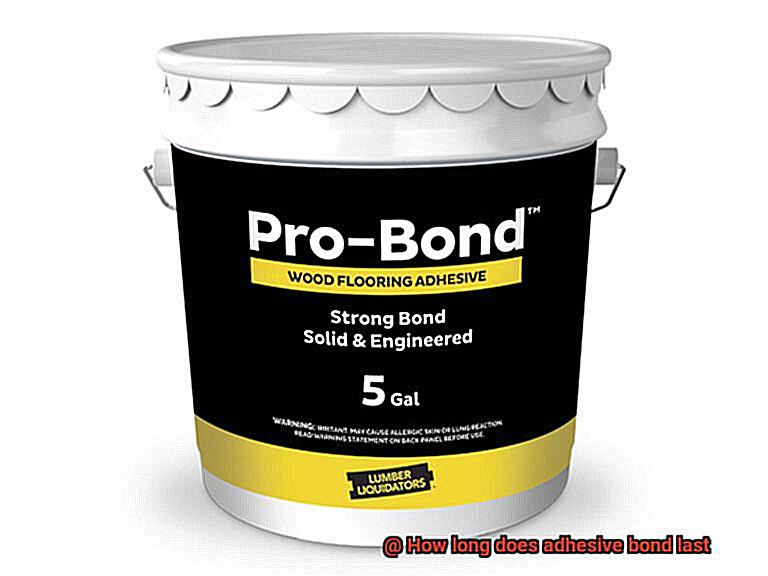
Environmental Conditions and Their Effect on an Adhesive Bond
In the realm of adhesives, the harmony between environmental conditions and adhesive bonds is a dance that must be orchestrated with precision. From temperature fluctuations and humidity levels to exposure to chemicals, UV radiation, mechanical stress, and proper surface preparation, understanding the impact of these factors is essential for achieving enduring connections. Join us as we explore the effect of environmental conditions on adhesive bonds and uncover the secrets to their longevity.
Temperature:
Extreme temperatures pose a formidable challenge to adhesive bonds. High temperatures transform adhesives into quivering masses, causing them to soften or melt – a recipe for bond failure. Conversely, low temperatures render adhesives brittle, weakening their adhesion strength. Selecting an adhesive suited for the anticipated temperature range is paramount to ensuring bond durability.
Humidity:
Humidity levels wield significant influence over adhesive performance. Surging humidity saturates the bond line with moisture, diluting the adhesive’s strength and undermining its effectiveness. Conversely, arid conditions induce rapid drying of certain adhesives, leaving them bereft of adequate bonding capabilities. Opting for an adhesive compatible with projected humidity levels safeguards a robust and enduring bond.
Exposure to Chemicals or Solvents:
Chemicals and solvents pose formidable threats to adhesive bonds. Certain chemicals react with adhesives, triggering degradation and compromising bonding properties. Solvents like alcohol or acetone ruthlessly dissolve specific adhesives, tearing asunder what was once a steadfast bond. Deliberate consideration of chemical exposure paves the path towards selecting an adhesive resistant to such corrosive forces.
UV Radiation:
Prolonged exposure to the sun’s relentless UV rays can erode adhesives over time, corroding bond strength. Shielding adhesive bonds from this relentless assault necessitates harnessing UV-resistant adhesives in applications subject to sunlight’s unyielding glare, preserving bonds that defiantly withstand the test of time.
Mechanical Stress or Movement:
Mechanical stress, in the form of vibrations, impacts, or ceaseless flexing, strains adhesive bonds and precipitates their downfall. Arming applications with adhesives designed to withstand these relentless assaults fortifies their resilience, ensuring bonds that remain unyielding even in the face of unrelenting movement.
Surface Preparation:
The foundation for a robust adhesive bond lies in meticulous surface preparation. Surfaces must be pristine – devoid of contaminants that impede adhesion – clean, dry, and ready to embrace the adhesive’s embrace. Employing techniques like cleaning, sanding, or priming breathes life into optimal bonding conditions.
Load Placed on a Bonded Surface and Its Impact on Longevity
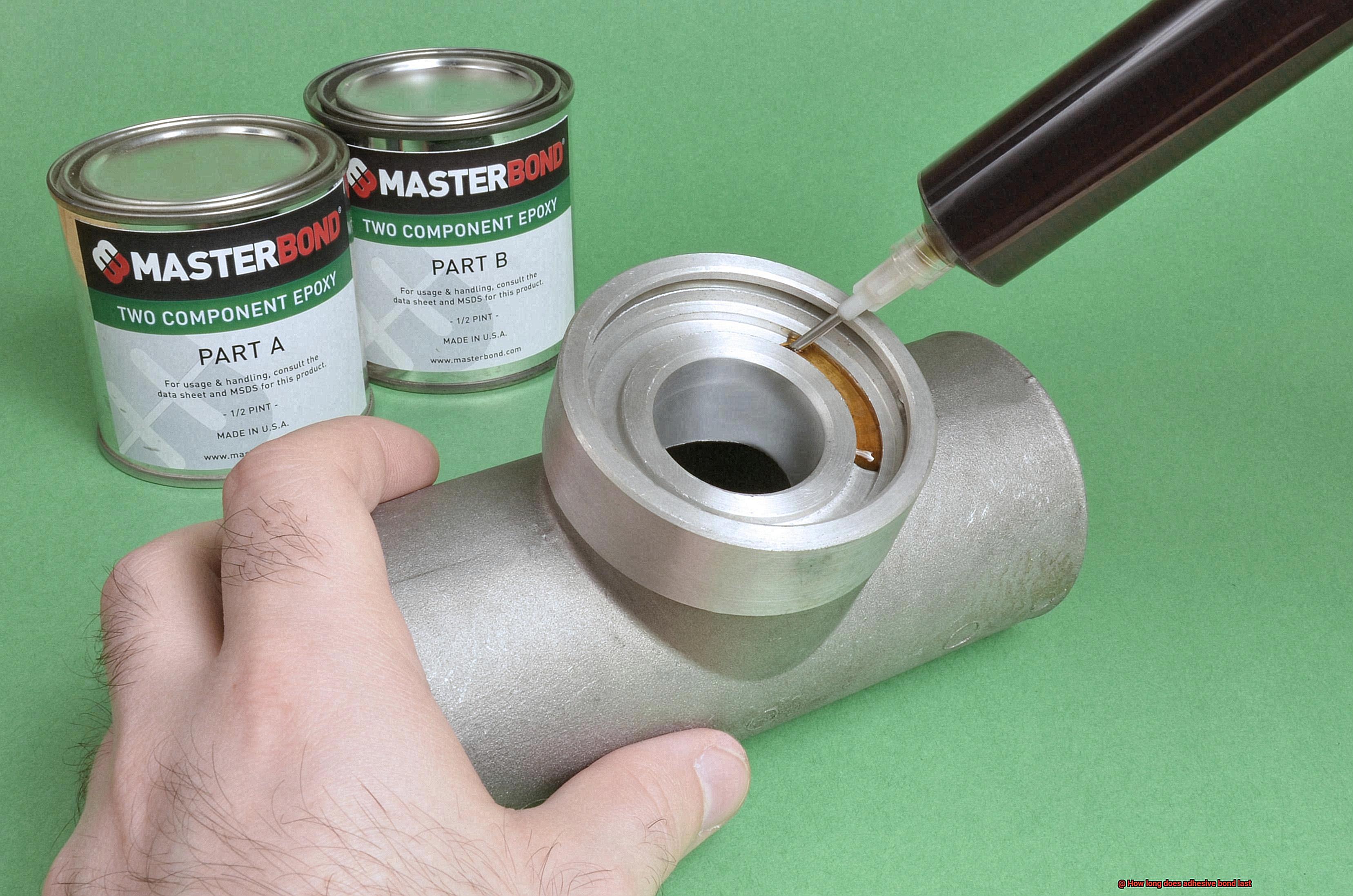
Picture a shelf laden with books or a car’s body panels held together by glue – that weighty force that demands attention. Today, we’ll delve deeper into the intricate workings of these bonds and uncover what truly determines their resilience.
When it comes to load on a bonded surface, we’re referring to the force or weight applied to that surface. It’s like a balancing act where the right amount of weight can sustain the bond, while an excess can lead to failure. So, let’s explore the factors that influence adhesive bond longevity under load:
- Adhesive Type: Different adhesives possess varying load-bearing capacities. Choosing the right adhesive for your specific application and load requirements is akin to selecting the perfect tool for a job – it ensures optimal performance.
- Surface Preparation: Properly cleaning and roughening surfaces before bonding is paramount. This step enhances bond strength and facilitates better load distribution. Imagine trying to stick two slick surfaces together – it’s a recipe for disappointment.
- Material Matters: The materials being bonded play a significant role too. Some materials may deform or stress more under load, weakening the bond over time. It’s like having a weak link in a chain – it compromises the entire structure.
- Load Duration: Remember, it’s not just about the weight; it’s also about how long it lasts. Short-term loads may be manageable for adhesive bonds, but continuous or long-term loads can be disastrous. It’s like carrying a heavy bag for a short walk versus lugging it around all day – there’s a world of difference.
- Reinforcement Methods: Heavy loads often require additional support. Mechanical fasteners or structural supports can bolster the adhesive bond, providing stability and preventing missteps. It’s like having a reliable partner in a dance routine – they share the load and ensure success.
- Environmental Conditions: Ah, the demands of Mother Nature. Temperature fluctuations, moisture exposure, and chemical attacks can weaken adhesive bonds. Just as extreme weather can wear you down, these conditions can do the same to glue.
- Maintenance Matters: Regularly inspecting and maintaining bonded surfaces is key to identifying signs of failure or degradation. Promptly addressing issues prevents further damage and keeps the bond strong. It’s like giving your car a regular tune-up – it keeps everything running smoothly.
By considering factors such as adhesive type, surface preparation, materials, load duration, reinforcement methods, environmental conditions, and maintenance practices, you’ll ensure a robust adhesive bond that stands the test of time.
Claims About Lifespan and Actual Durability of a Bond
Adhesive bonds are ubiquitous, found in everything from the shoes on our feet to the cars on the road. But how long do these bonds truly last? In this blog post, we will uncover the truth about the lifespan and actual durability of adhesive bonds. So sit back, relax, and let’s delve into the world of adhesive strength.
Claim #1: “Adhesive bonds are permanent and will last a lifetime.”
While it is true that some adhesives can create long-lasting bonds, it’s important to consider the specific conditions in which the bond will be exposed. Temperature fluctuations, humidity levels, and stress can all impact the longevity of an adhesive bond. So, while some bonds may indeed last a lifetime, others may deteriorate over time due to these factors.
Claim #2: “Certain adhesives are resistant to environmental factors.”
Yes, some adhesives are formulated to withstand moisture, UV exposure, or chemicals. However, not all adhesives possess these properties. It’s crucial to choose the right adhesive for your specific application to ensure it can withstand the intended environmental factors. Don’t assume that all adhesives are equally resistant; do your research before making a selection.
Claim #3: “Adhesives have high tensile strength and resistance to shear forces.”
Tensile strength refers to a material’s ability to withstand pulling or stretching forces, while shear strength refers to its ability to withstand parallel forces. Adhesives with high tensile and shear strength are commonly used in construction or automotive industries. However, evaluating these claims should be based on industry standards and testing methods. Don’t fall for exaggerated claims without proper verification.
Claim #4: “Proper surface preparation and application techniques enhance bond durability.”
This claim holds true. Inadequate surface preparation or improper application can compromise bond strength and lead to premature failure. Follow the manufacturer’s instructions carefully, ensuring that surfaces are clean, dry, and free from contaminants. Don’t rush through this step; it is the foundation for a strong and durable bond.
Choosing the Right Adhesive for Your Application
When it comes to selecting the perfect adhesive for your application, there are several factors to consider. As an expert in this field, I am here to provide you with detailed information on how to make the right choice.
First and foremost, you need to take into account the specific materials you are bonding together. Different adhesives work better on certain materials than others, so it is crucial to select one that is compatible with both surfaces. For instance, if you are bonding metal to plastic, you will need an adhesive specifically designed for this combination.
Next, consider the environmental conditions that the adhesive will be exposed to. If your bond will face high temperatures or humidity, you will need an adhesive that can withstand these conditions without losing its strength. Look for adhesives that are heat- or moisture-resistant for optimal performance.
The intended use of the bonded materials is another crucial factor. If flexibility or resistance to chemicals and solvents is important, make sure to choose an adhesive that possesses these specific properties. Some adhesives are designed for flexible bonds, while others are better suited for rigid bonds.
Curing time is also a key consideration. Some adhesives require longer curing times before they reach their maximum strength, while others provide an instant bond. Make sure the curing time aligns with your application and assembly process to ensure a successful bond.
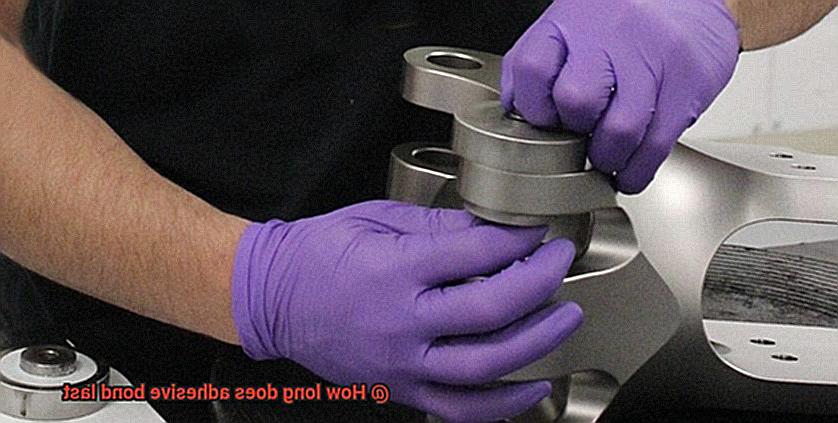
Following the manufacturer’s instructions and guidelines is essential for proper application and storage of the adhesive. Use the recommended amount of adhesive and ensure that both surfaces are clean and free from any contaminants or residues.
Lastly, think about the cost and availability of the adhesive. While it may be tempting to opt for a cheaper option, consider the performance and longevity of the bond. Choosing a high-quality adhesive may result in a longer-lasting bond and potentially save you money in the long run.
Tips for Ensuring a Long-Lasting Adhesive Bond
When it comes to adhesive bonds, their lifespan depends on various factors. The type of adhesive used, the materials being bonded, environmental conditions, and the application or load placed on the bond all play a role in determining how long it will last. This comprehensive guide provides tips to ensure a long-lasting adhesive bond.
Proper Surface Preparation:
Before applying any adhesive, it is crucial to ensure that the surfaces being bonded are clean and free from contaminants. Dust, grease, or other impurities can act as barriers, preventing a strong bond from forming. Surface preparation may involve cleaning with solvents or using abrasives to roughen smooth surfaces for better adhesion. Taking the time for thorough surface preparation is essential for maximizing the bond’s longevity.
Choosing the Right Adhesive:
Selecting the appropriate adhesive is crucial for achieving a long-lasting bond. Different adhesives have varying properties and are designed for specific applications. Consider factors such as temperature resistance, flexibility, and curing time when choosing an adhesive. Consulting with adhesive manufacturers or experts can help identify the most suitable adhesive for a particular bonding requirement.
Proper Application Technique:
Following the manufacturer’s instructions for applying the adhesive is vital for a strong and durable bond. Applying the adhesive evenly and in the recommended quantity ensures optimal bonding performance. Some adhesives may require specific techniques like applying a primer or mixing two components before use. It is important to follow these instructions meticulously to achieve the desired bond strength.
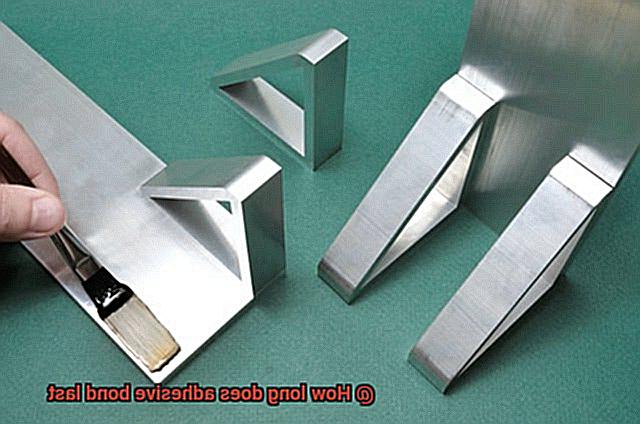
Allowing Sufficient Curing Time:
Adhesive bonds typically require time to fully cure and reach their maximum strength. Rushing the process by applying stress or load on the bond before it has cured properly can weaken the bond and reduce its longevity. It is essential to allow sufficient curing time as specified by the adhesive manufacturer. Patience during this stage will yield a more durable bond.
Consideration of Environmental Factors:
Environmental conditions can impact the integrity of adhesive bonds. Extreme temperatures, humidity, sunlight or UV radiation, and chemical exposure can all affect the bond’s durability. It is crucial to choose adhesives that are designed to withstand these conditions to ensure a long-lasting bond. Additionally, protecting the bonded assembly from adverse environmental conditions can help prolong the bond’s lifespan.
pRbF5RdTryI” >
Conclusion
When it comes to the longevity of adhesive bonds, there are several factors to consider. The type of adhesive used, the materials being bonded, and the environmental conditions all play a role in determining how long the bond will last. Generally speaking, adhesive bonds can last anywhere from a few hours to several decades.
- Understanding the duration of adhesive bonds is crucial for successful applications.
- Diverse variables intertwine to shape the lasting power of these connections.



